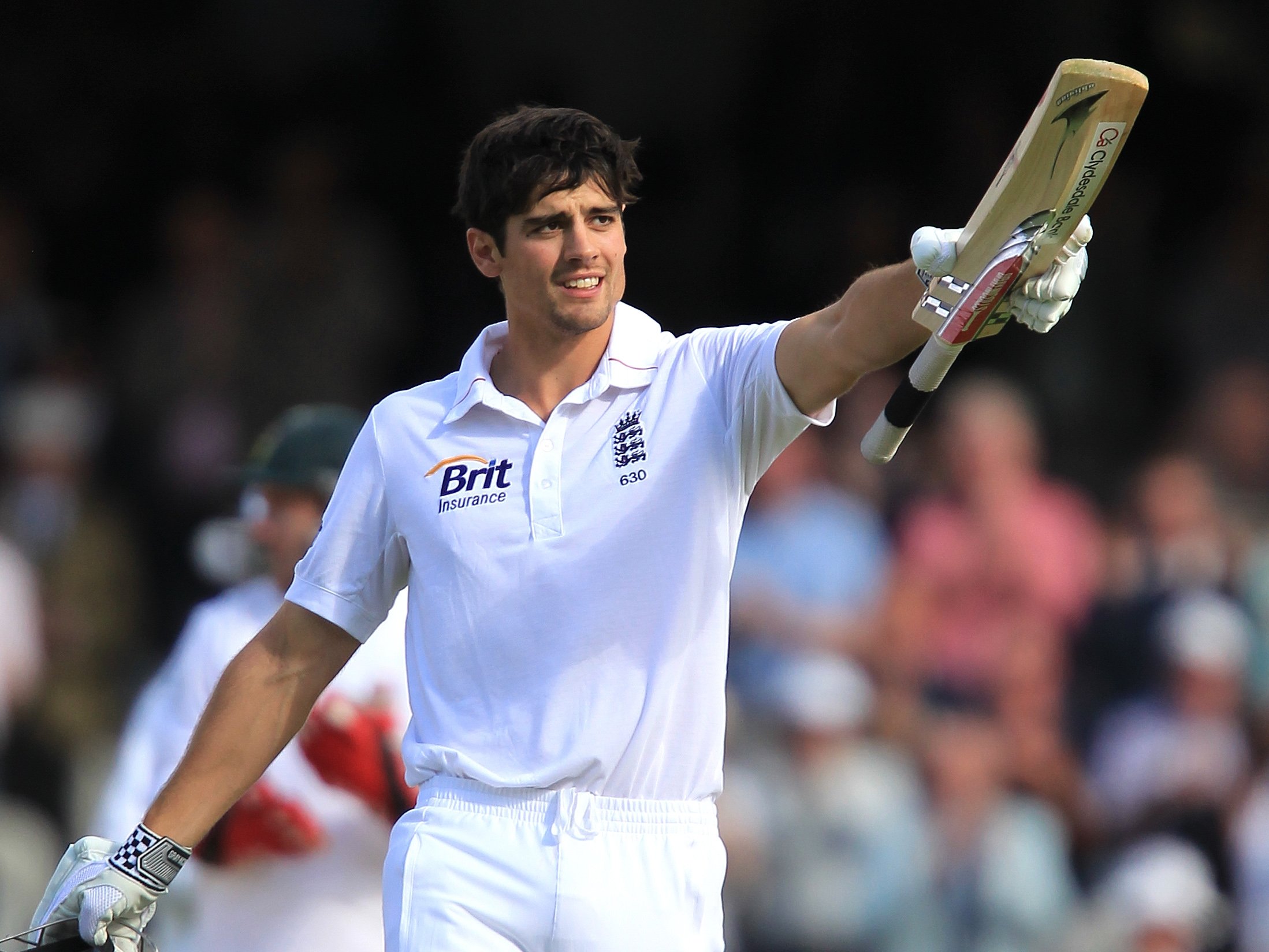
Alastair Cook and cricket greatness
Posted on - June 23 Tuesday, 2015
His sheer bloody-minded self-belief has brought with it 114 England caps, 27 hundreds and 9,000 Test runs, but has Cook lifted himself among the greats?
Nine thousand runs, 27 hundreds, 114 caps; more runs and more centuries than any other Englishman, the eternal Graham Gooch eclipsed... We must start to consider the greatness of Alastair Cook: the statistics alone demand it.
It feels strange to do so, because Cook is so evidently only part-way through his time as a Test match batsman and few players make such a demand at such a stage. It’s also strange because Cook is not obviously great in the way that Viv Richards or Brian Lara or Sachin Tendulkar or Ricky Ponting or any other of those obviously great players have been. And when Cook is bad he’s not even good, let alone anything else.
In a way he is the mirror image of his bete noire, Kevin Pietersen. Almost everything Pietersen does at the crease is memorable for one reason or another. Almost nothing Cook does remains once it is over. Huge hundreds exist as blurs, as flickering and repeating images of clips through midwicket, rasping back cuts, checked punts past cover and most of all, that relentless judgement of off-stump line - leave, leave and leave again... Close your eyes and imagine Brisbane and Adelaide 2010 or Ahmedabad, Mumbai and Kolkata 2012, or his monolithic 294 against India in Birmingham in 2011, and these trace elements are what’s left behind.
Opening the batting in Test cricket should attract stubborn, attritional men: every Chris Gayle or Virender Sehwag or David Warner needs their counterbalance. Cook’s batting lacks ego – or perhaps more accurately, his self-image doesn’t need reinforcing with big shots and back-page headlines. At his best he dominates through time; he presumes that you will break before he does.
With an irony he may not appreciate, Cook’s batting is most interesting when it is going wrong. His dry spell between summer 2007 and early 2009, when his average dropped from 48.79 to 40.87, and his famous century-free trot between July 2013 and May of this year, provided more drama than the oceanic calm of his big innings because the internal battle was plain to see. For Cook, the gap between his best and his worst is wide. He’s not a player who can hit his way back into form with a streaky 70-odd. Only time at the crease will do it, and he just couldn’t stay in.
Technical problems were widely analysed: the heavy head, the loss of judgement of line. And the world’s bowlers were wising up and not feeding the cut and pull, which for a while left him struggling for a response. He tried to broaden his range, primarily for the 50-over game, adding a slog sweep and a lofted drive, but it seemed to rob him of more than it gave.
He solved it the only way he knew how, with hour upon hour of practice, regrooving the stance and the trigger movement and the backlift until the world was right once more, and the ball could be left with safety and the bowlers got bored and started to bowl at him again and then the clip off the legs came back and the strike rotated and the opposition got tired and deliveries that he could cut and pull arrived and were cracked to the boundary and everything clicked back into place. He and Goochie like peas in a pod – practice, practice, practice – and Cook, on his mentor’s shoulders, finally surpassing him into history.
Much of this was done in dark times, the Ashes whitewash, the sacking of Pietersen, the unequivocal backing of the ECB that actually weighed heavy rather than lightened the load. Whatever you feel about Cook, that sheer bloody-minded self-belief is what greatness is built on, and all of the greats have it.
Often though, greatness is conferred through a judgement of aesthetics. It’s why you hear the name David Gower more often than Ken Barrington, why David Beckham is world famous and Paul Scholes is one for the football connoisseurs, why an AB de Villiers hoick appears textbook and a Graeme Smith straight drive looks like a man strangling a chicken. As watchers, as fans, we value beauty because that is what separates them from everyone else who can hit a cover drive or a decent forehand or a straight three iron.
It’s into this gap that Cook, like Graeme Smith, falls. The statistics make a case for elevation to the very top rank of players, and yet they are not always mentioned. Cook will probably have a long-ish while left after the captaincy is gone – win or lose, the end of the Ashes may be a good time to pass it along – and he could end up on the all-time lists somewhere around Lara and Mahela Jayawardene and Kumar Sangakkara, perhaps even Rahul Dravid. It would further his case to have an average nearer 50, but every other English Test record will be his, and it would be hard to deny him the laurels then.
We may not remember too many of those runs with the kind of piercing clarity that the box office batsman offers, but they all look the same in the book. Cook’s feats are ones of day-to-day reality rather than imagination, and he’ll have the satisfaction of other, more lauded players having to crane their necks to see how far he sits above them.



